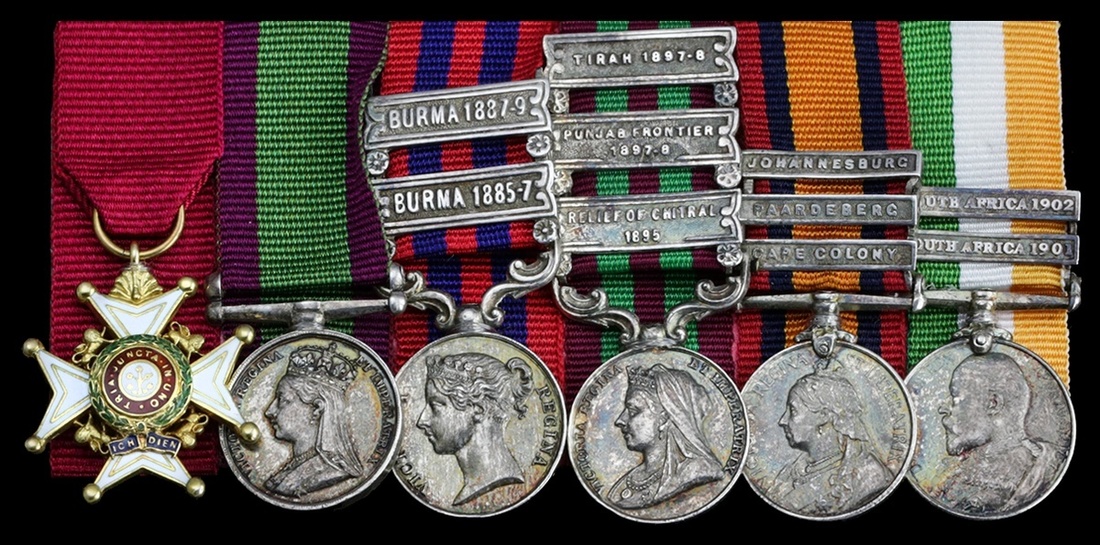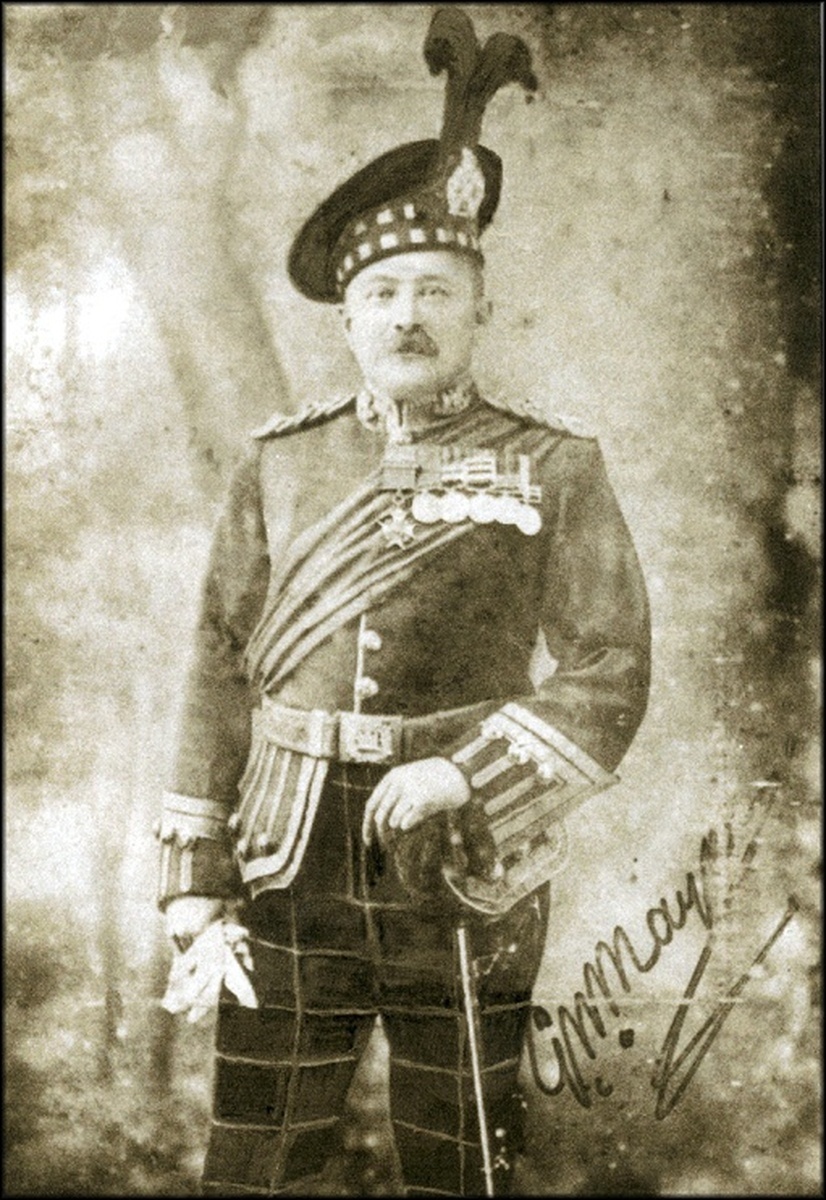Auction: 18001 - Orders, Decorations and Medals
Lot: 378
(x) The mounted group of six miniature dress medals attributed to Colonel G. N. Mayne, C.B., King's Own Scottish Borderers, who commanded his regiment in South Africa and was later Colonel of the York and Lancaster Regiment
The Most Honourable Order of the Bath, Military Division, gold and enamel, ring suspension; Afghanistan 1878-80, no clasp; India General Service 1854-95, 2 clasps, Burma 1885-7, Burma 1887-9; India General Service 1895-1902, 3 clasps, Relief of Chitral 1895, Punjab Frontier 1897-8, Tirah 1897-8; Queen's South Africa 1899-1902, 3 clasps, Cape Colony, Paardeberg, Johannesburg; King's South Africa 1901-02, 2 clasps, South Africa 1901, South Africa 1902, mounted for display, good very fine (6)
George Nisbett Mayne was born on 28 July 1854, son of Major Robert Graham Mayne, H.E.I.C.S., and was educated at Wellington College, 1866-71. He entered the Army as 2nd Lieutenant, unattached from Sandhurst, and was gazetted as Lieutenant on 13 June 1874 to the 25th (King's Own Borderers). He accompanied the regiment to India and took part in the 2nd Afghan War of 1878-80 with the Khyber Line Force.
He subsequently held a staff appointment in the Burmese Expedition of 1886-88, and was mentioned in despatches by Major-General Sir G. S. White (Medal & 2 clasps). During the Chitral operations of 1895, he accompanied the relief force and commanded 'C' Company in the storming of the Malakand Pass on 3rd April (Medal & clasp). He then took part in further operations on the North-West Frontier with the Tirah Expeditionary Force in 1897-98, against the rebellious Afridi, Zakka Khel and Orakzai tribesmen, and was mentioned in despatches (London Gazette 5 April 1898, refers). During one phase of the operation in 1897, he commanded four companies of the 2nd Battalion who successfully assaulted and captured the Dargai Heights, accompanied by the 1st/3rd Gurkhas, on 18 October, only to be forced into a difficult retirement for not being equipped to hold such a position so far from their base camp. The undoubted gallantry of this magnificent frontal attack, however, was rather lost sight of and forgotten in the more tragic events of the second attack on the 20 October (2 clasps).
Mayne was posted back to the 1st Battalion and commanded it in South Africa from September 1900 until February 1902. He took part in operations in the Orange Free State, February to May 1900, including the battle of Paardeberg (17 to 26 February); the actions at Poplar Grove, Karee Siding, Vet River (5 and 6 May) and the Zand River. At Karee Siding, the Battalion suffered 83 casualties in driving the Boers from the hills.
He also served in the Transvaal in 1900, when, in late May, the Battalion crossed the Vaal River and was present at the surrender of Johannesburg and on 4 June, at the reduction of the southern forts at Pretoria. During further operations in the Transvaal, the Battalion was employed in small detachments garrisoning the railway lines between Pretoria and Middleburg, and west of Pretoria between July and November 1900, including the action at Zilikats Nek.
In his despatch dated 8 September 1901 (London Gazette 3 December 1901, refers), Lord Kitchener, referring to the capture near Damhoek on 10th August of 40 Boers, including Commandant Wolmaarans, chairman of the late Volksraad, said, 'The majority of these prisoners, who were fully equipped with rifles, horses, and saddlery, were taken by the Volunteer Service Company of the K.O.S.B. under Major Mayne.'
In September 1901, the Battalion relieved the West Yorkshire Regiment on the Mooi River blockhouse line where, in January 1902, Mayne superintended the construction of a new line. In addition to two 'mentions', Mayne was rewarded with the Brevet of Lieutenant-Colonel and created a Companion of the Bath (London Gazette 31 October 1902, refers).
On being confirmed in the rank of Lieutenant-Colonel, he was appointed commanding officer of the 1st Battalion, York and Lancaster Regiment in October 1903, then stationed at Mhow, near Bombay. Given the Brevet of Colonel in June 1904, Mayne was placed on half-pay in January 1906.
Re-employed during the Great War, he commanded the 10th (Reserve) Battalion, South Staffordshire Regiment. Originally raised as a Service Battalion at Plymouth in October 1914, it became a Reserve Battalion in May 1915 at Harrogate and, in September 1916, was absorbed into the Training Reserve battalions at Rugeley in the 2nd Reserve Brigade. Mayne commanded the Battalion through to the end of 1916. He retired to Monte Carlo and died on 6 June 1932, aged 77; sold with unglazed display frame containing copied research.
Subject to 5% tax on Hammer Price in addition to 20% VAT on Buyer’s Premium. For more information please view Terms and Conditions for Buyers.
Sold for
£350







